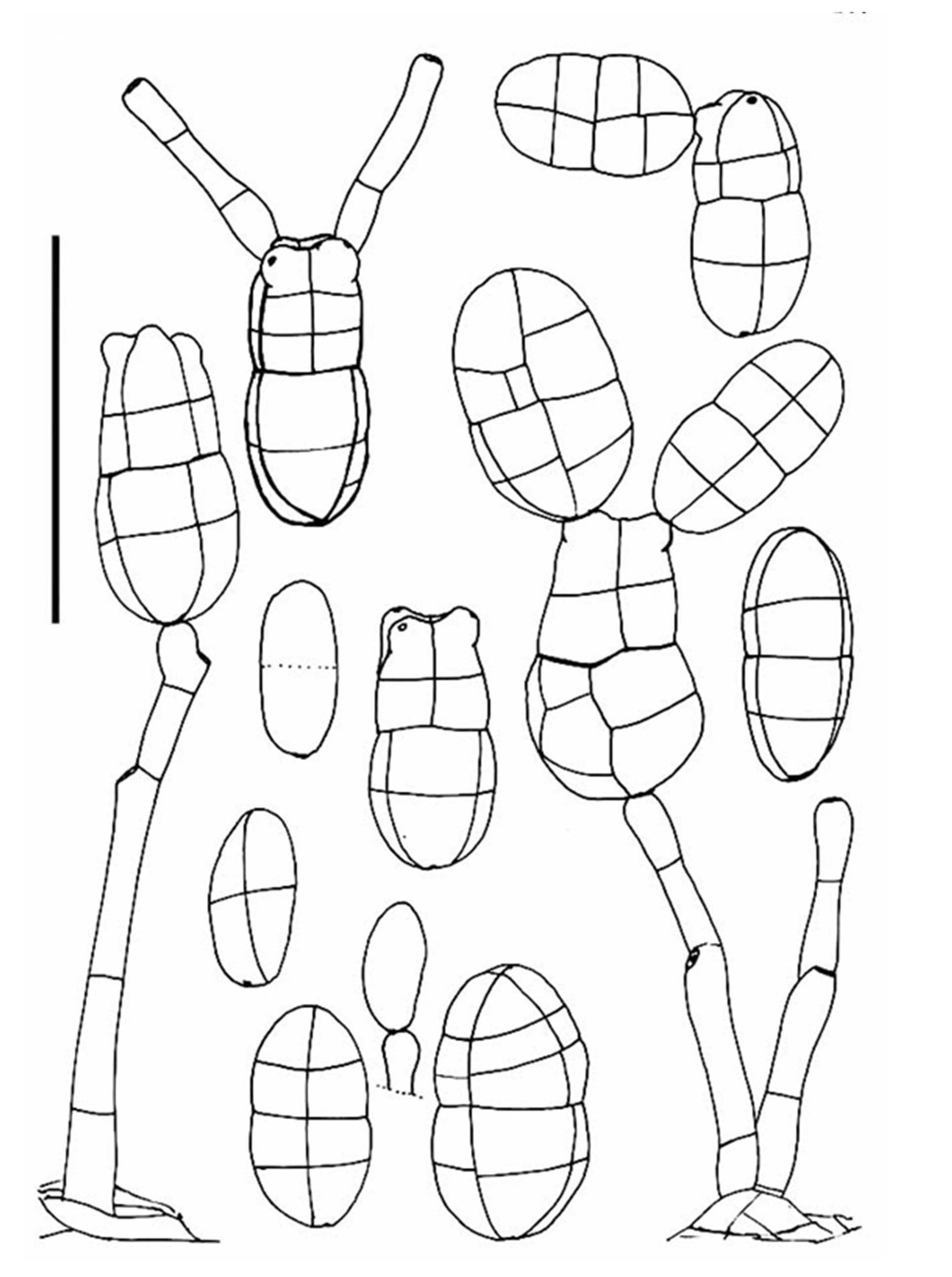Gibbago trianthemae E.G. Simmons, Mycotaxon 27: 108 (1986)
Notes: Gibbago was introduced by Simmons (1986) and typified with G. trianthemae. The genus is characterised by erect, simple with a single apical conidiogenous locus, septate, slightly pigmented Conidiophores initially solitary, conidia ellipsoid, beakless, pigmented, becoming transversely and longitudinal septate, with apical cells swelling slightly and producing secondary conidia. Gibbago was assigned to Pleosporaceae by Simmons (1986) based on its similarities with Alternaria, Embellisia, Ulocladium and Stemphylium and this was followed by Wijayawardene et al. (2014). During our phylogenetic analysis, the putative strains of Gibbago trianthemae GT-VM and NFCCI 1886 forms distinct clade basel to Paradendryphiella and Pleospora clade with a low boostrap support. Therefore based on morphology coupled with molecular data, we tentatively refer Gibbago in Pleosporaceae, but this needs to be confirmed with further sequences of the monotypic genus and type species G. trianthemae.
Fig 1 Gibbago trianthemae (Redrawn from the holotype in Simmons (1986), Fig 1). Scale bars: = 50 µm

